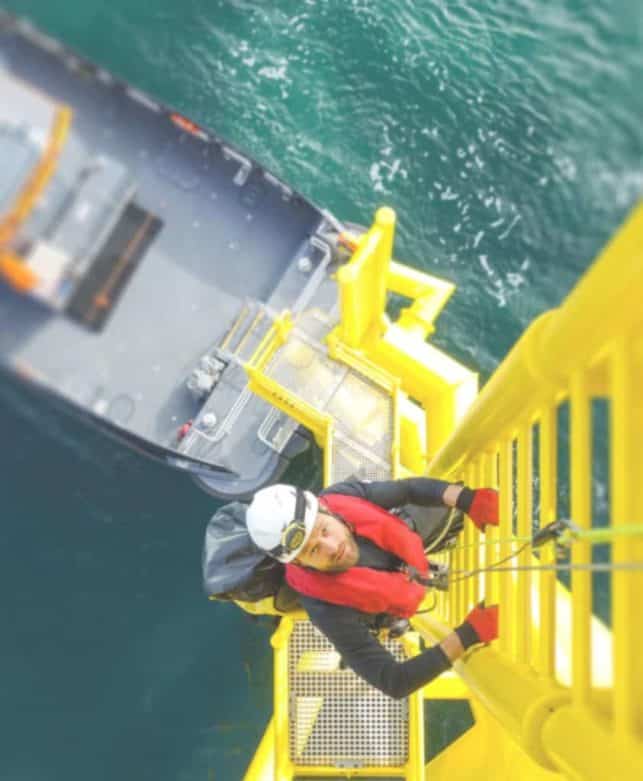
Whenever we talk to our clients about the challenges they face, one word comes up time and again: safety. It’s at the heart of what we do at Sennen – making offshore O&M simpler and safer through specialised digital systems.
Safety first
Thankfully the offshore wind industry has not had any fatalities in recent years, but its safety record still lags behind oil and gas. In 2019, the Lost Time Injury Frequency Rate for the European offshore wind industry was three times higher than offshore oil and gas.1
Keeping track of restrictions, staff qualifications, incident reports and risk assessments can be an overwhelming task. When it is left to people, there is always the potential for human error.
Below we explore the myriad ways to ensure better HSE outcomes. These result in greater efficiency and higher project returns:
1. Restrictions and alerts
The offshore wind sector is highly regulated. Every piece of equipment must be in proper working order before a job can begin. If there’s a problem, a restriction will be raised. This could be anything from oil spill in a nacelle on a turbine, to a lift that is overdue for inspection.
Whenever a restriction comes into effect, workers must be alerted. Sometimes a notification is all that is needed, but in other cases only those with specific qualifications can proceed. Finding out about a restriction at the last minute can waste an entire day’s work. Worse still, missing a restriction entirely can put workers in danger and have serious legal ramifications.
However, if equipment service and inspection dates are stored centrally, restrictions can be automatically created. An integrated work planning system like Sennen will alert users to restrictions as each work shift is planned. Unsafe tasks or zones are flagged up early, preventing last minute disruption or cancellation.
2. Adherence to Safe Systems of Work
Under Wind Safety Turbine Rules or other safe systems of work, each task will require specific permits or qualifications to be in place.
An automated system like Sennen can track the expiry of qualifications and cross reference this against the shift plan as it is created, and not when technicians arrive at the boats. Sennen also checks the competency levels of the team against the tasks they have been allocated. This avoids last minute disruptions and lost working hours, and validates all work orders before plans are submitted.
Read more about WTSR and Sennen here.
3. Incident reporting
Reporting health and safety incidents to the HSE is a legal requirement for all businesses. Every injury, hazard and near miss must be logged, categorised and processed to ensure work procedures are safe.
Failing to report an incident can lead to a hefty fine and puts employees at risk.
This can be stressful for H&S managers as they struggle to keep up with multiple or overlapping incidents. Crucial O&M activity may become mired in a sea of red tape.
The reporting and investigation process is therefore fertile ground for digitisation to ensure rapid and accurate classification and response action. If a HSE system is working well, incidents and actions on the ground are handled swiftly and once only, creating a clear auditable record.
These records can flow directly into management level risk monitoring (see below).
4. Risk monitoring
Every offshore site will have a risk management system in place. Traditionally, a ‘risk register’ is compiled by scoring risks according to the danger they pose. This is stored in a spreadsheet and updated from time to time. It is labour intensive and prone to error. Digitising your risk register allows you to update it quickly and easily.
Risk should be viewed as a dynamic and evolving metric rather than a static, absolute measure. This is done by recording a baseline risk score, recording the impact of mitigations and aggravating incidents.
With a timeline of risk, it is possible to observe trends, set targets, measure the effectiveness of actions taken and motivate the team to plan and implement more safety improvements.
How Sennen can help
Health and safety can sometimes feel like a burden. Fortunately, many of the common issues can be improved or avoided completely with an integrated, carefully designed O&M data system like Sennen.
Sennen’s technology reflects the reality on the ground. Our systems are created as part of a collaborative process with those on the front line to gain real results.
Get in touch here to request a product data sheet to find out more.
REFERENCES:
1. https://oilandgasuk.co.uk/wp-content/uploads/2019/10/Health-and-Safety-Report-2019.pdf